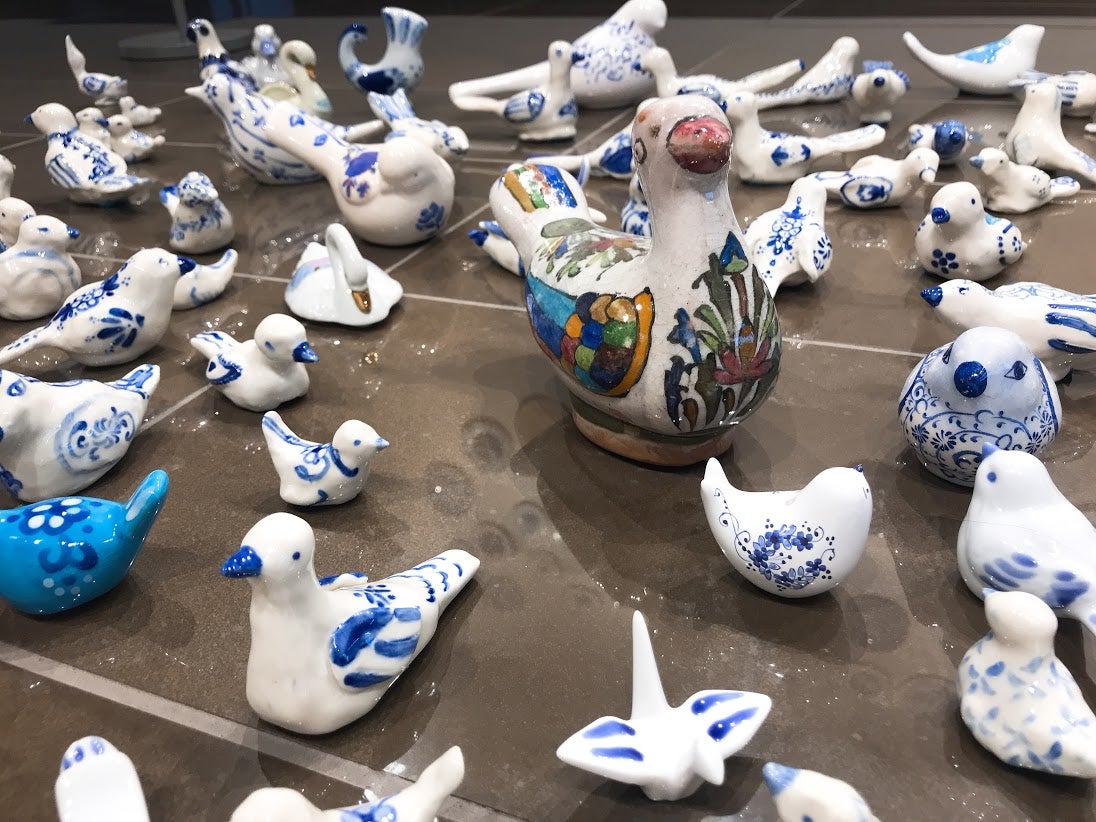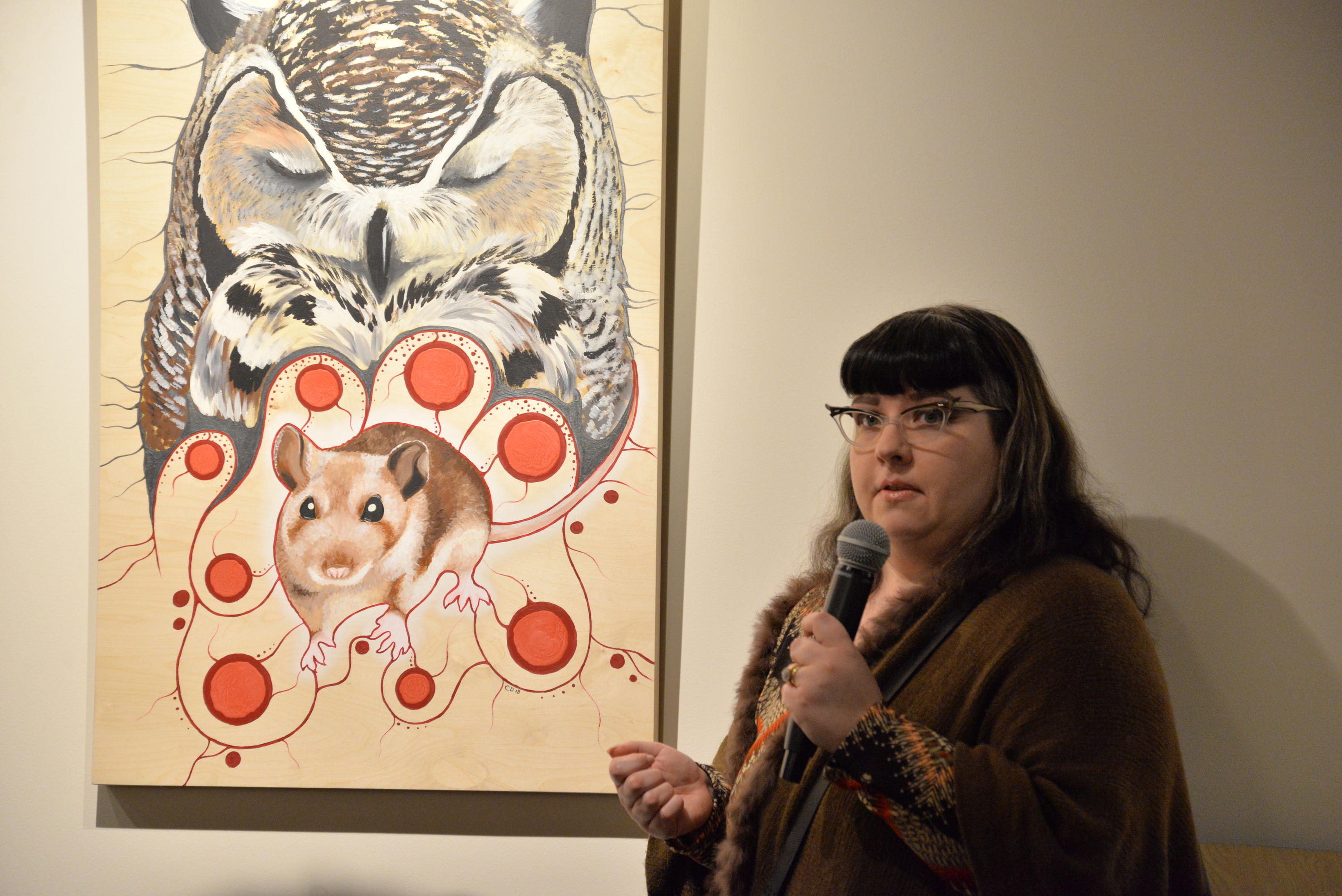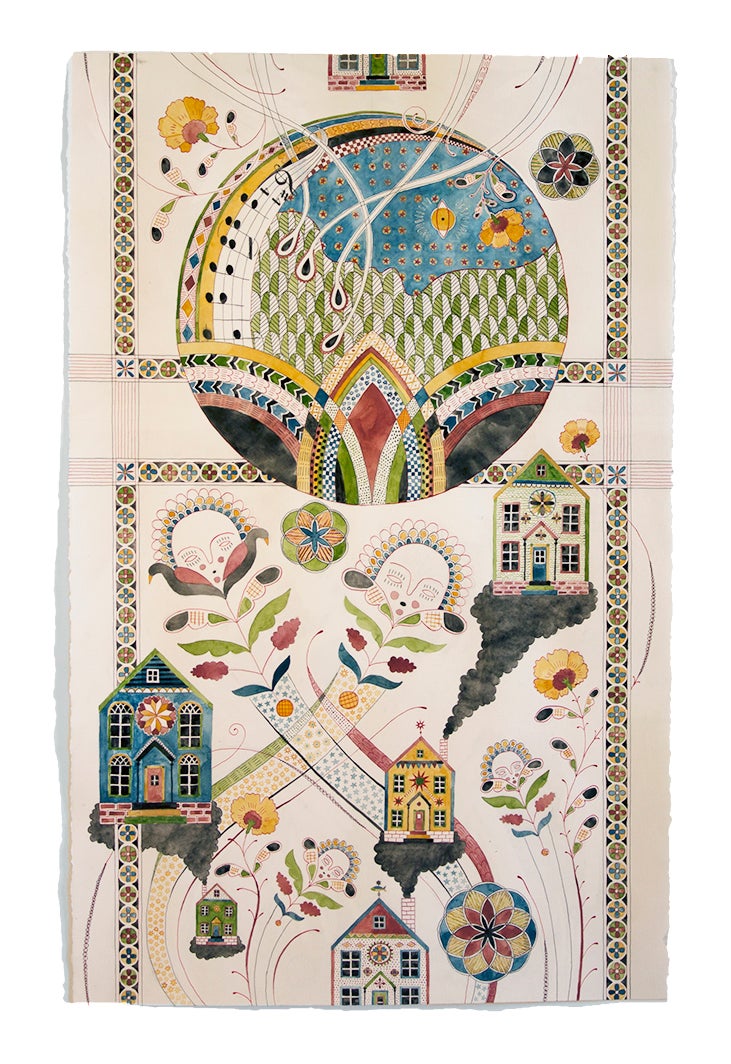Since our first exhibit in 2014, the Grebel Gallery has been a place to craft, record, map, and perform the stories of peacemaking. It has been a space to inspire new ways of thinking, challenge harmful systems and norms, and catalyze conversations on questions of peace and justice.
This past year the Grebel Gallery has hosted three exhibits that – almost serendipitously – were in conversation with each other. Three artists have challenged our community to redefine how we perceive Canadian identity, build understanding between worldviews, and think critically on what it means to live on this land.
Each of these three artists holds a unique identity that has allowed visitors to the Gallery to learn from different perspectives and understandings.

Following the exhibit on Cultural Translation


We often are asked: why have an art gallery in a peace centre? These three exhibits strikingly demonstrate the ability of visual art to create whole-bodied engagement with potentially provocative subject matter. It allows the viewer step into the conversation, facilitated by their own interpretations, and opens space to question norms.
The Centre for Peace Advancement’s priorities of social innovation, research, community engagement, and artist expression, uniquely intersect in our three programs. In our Centre, peace advancement is cognitive, relational and experiential. Our participants are challenged to use ‘many tools in the toolbox’ to work towards a common goal.
Our current exhibit, New Fraktur,will run until October 25, 2019.
Submit a proposal for the Grebel Gallery, or reach out to be part of the Grebel Gallery Team that coordinates and programs the space.